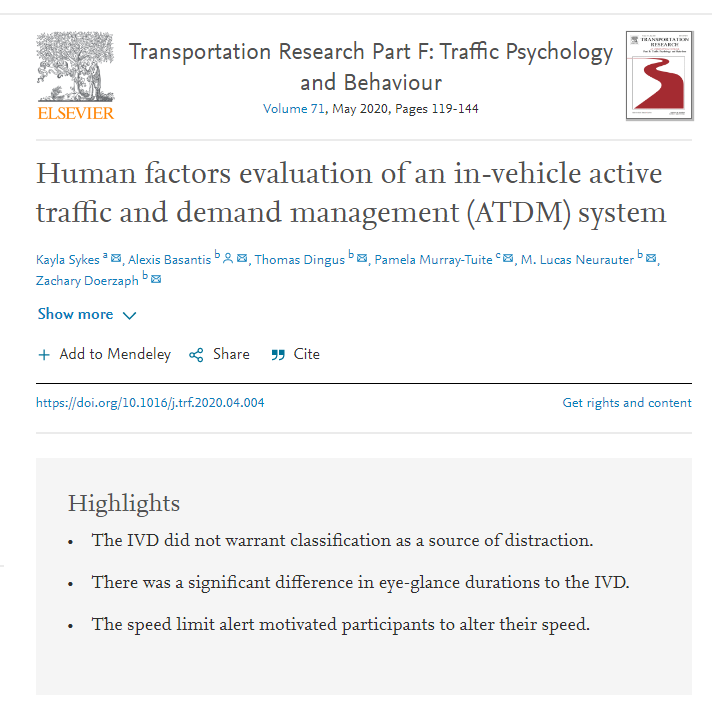【文章推荐】 Human factors evaluation of an in-vehicle active traffic and demand management (ATDM) system
作者: 来源: 日期:2020/12/12 17:40:35
题目:Human factors evaluation of an in-vehicle active traffic and demand management (ATDM) system
摘要:Abstract
This research study focused on the evaluation of an emulated in-vehicle Active Traffic and Demand Management (ATDM) system on Interstate 66 in Northern Virginia. Traditional ATDM systems rely on infrastructure-mounted variable message signs (VMS) to provide information (speed limits, lane availability, etc.) to the traveling public. By providing information about dynamic roadway conditions on an in-vehicle device, the ATDM may improve driving safety and performance by allowing drivers to remain consistently aware of forthcoming traffic conditions and roadway requirements; even when external signage is inaccessible. This study represents an initial investigation of an emulated in-vehicle ATDM to provide developers with design guidance and ensure that unintended consequences, such as distraction, do not undermine the potential benefits.
Twenty younger and 20 older participants, accompanied by a member of the research team, experienced the following ATDM features on an in-vehicle device (IVD) mounted to the dashboard: (1) dynamic speed limits, (2) dynamic lane use/shoulder control, (3) High Occupancy Vehicle (HOV) restrictions, and (4) roadway information from variable message signs. The IVD was equipped with auditory and visual alerts notifying the driver when relevant visual information was updated. Research questions addressed distraction and driver behavior associated with use of the system. Qualitative and quantitative participant data was acquired from the instrumented vehicle, various questionnaires, and researcher observation.
Several key findings were uncovered: (1) The IVD, as tested, did not warrant classification as a source of distraction according to the NHTSA guidelines; v2) There was a significant difference in eye-glance durations to the IVD when comparing the VMS alerts to both the speed limit and lane management alerts; and (3) The speed limit alert motivated participants to alter their speed (per survey results and participant speed data).

